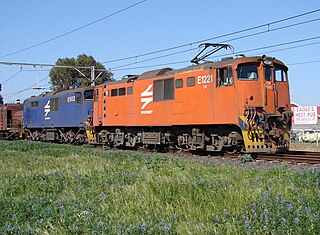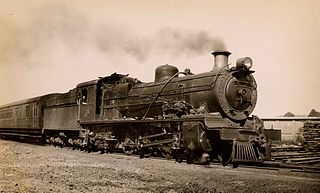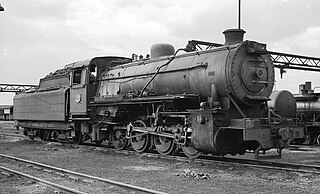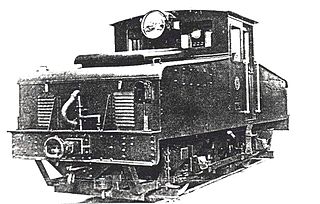The following lists events that happened during 1939 in South Africa.

The South African Railways Class 91-000 of 1973 was a narrow-gauge diesel–electric locomotive.

The South African Railways Class 1E of 1925 was an electric locomotive.

The South African Railways Class 3E of 1947 was an electric locomotive.

The South African Railways Class 6E of 1970 was an electric locomotive.

The South African Railways Class 11E of 1985 is an electric locomotive.

The Spoornet Class 14E of 1991 was a South African electric locomotive.

The South African Railways Class ES of 1936 was an electric locomotive.

The South African Railways Class 31-000 of 1958 was a diesel-electric locomotive.

The South African Railways Class 32-000 of 1959 was a diesel-electric locomotive.

The South African Railways Class 33-000 of 1965 was a diesel-electric locomotive.

The South African Railways Class 61-000 of 1959 was a diesel-hydraulic locomotive.

The South African Railways Class 16C 4-6-2 of 1919 was a steam locomotive.
The Union of South Africa was established on 31 May 1910 in terms of the South Africa Act, which unified the former Cape Colony, Natal Colony and the two colonised former republics, the Transvaal and the Orange Free State. One of the clauses in the Act required that the three Colonial Government railways, the Cape Government Railways, the Natal Government Railways and the Central South African Railways, also be united under one single administration to control and administer the railways, ports and harbours of the Union. While the South African Railways (SAR) came into existence in 1910, the actual classification and renumbering of all the rolling stock of the three constituent railways required careful planning and was only implemented with effect from 1 January 1912.

The South African Railways Class S 0-8-0 of 1929 was a steam locomotive.

The South African Railways Class S2 0-8-0 of 1952 was a steam locomotive.

The South African Railways Class ES1 of 1924 was an electric locomotive.

The South African Railways Class DS of 1939 was a diesel-electric locomotive.

The South African Railways gas-electric locomotive of 1923 was an experimental gas-electric locomotive. The fuel, suction gas, was generated on-board the locomotive from coal.

Under the British and Imperial classification scheme of locomotive axle arrangements 1Co+Co1 is a classification code for a locomotive wheel arrangement of two eight-wheeled bogies with an articulated inter-bogie connection, each with three axles powered by a separate traction motor per axle and with the fourth non-powered axle in an integral leading pony truck to reduce the axle load. The similar 1Co-Co1 classification is in the same axle configuration, but without the inter-bogie connection.



















